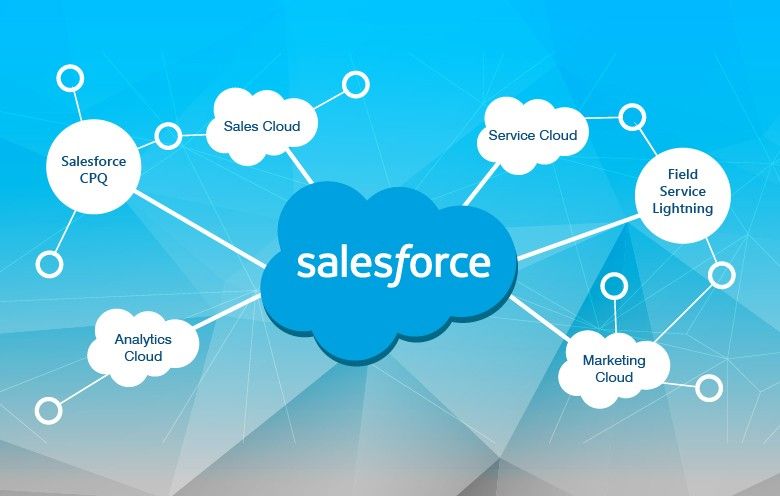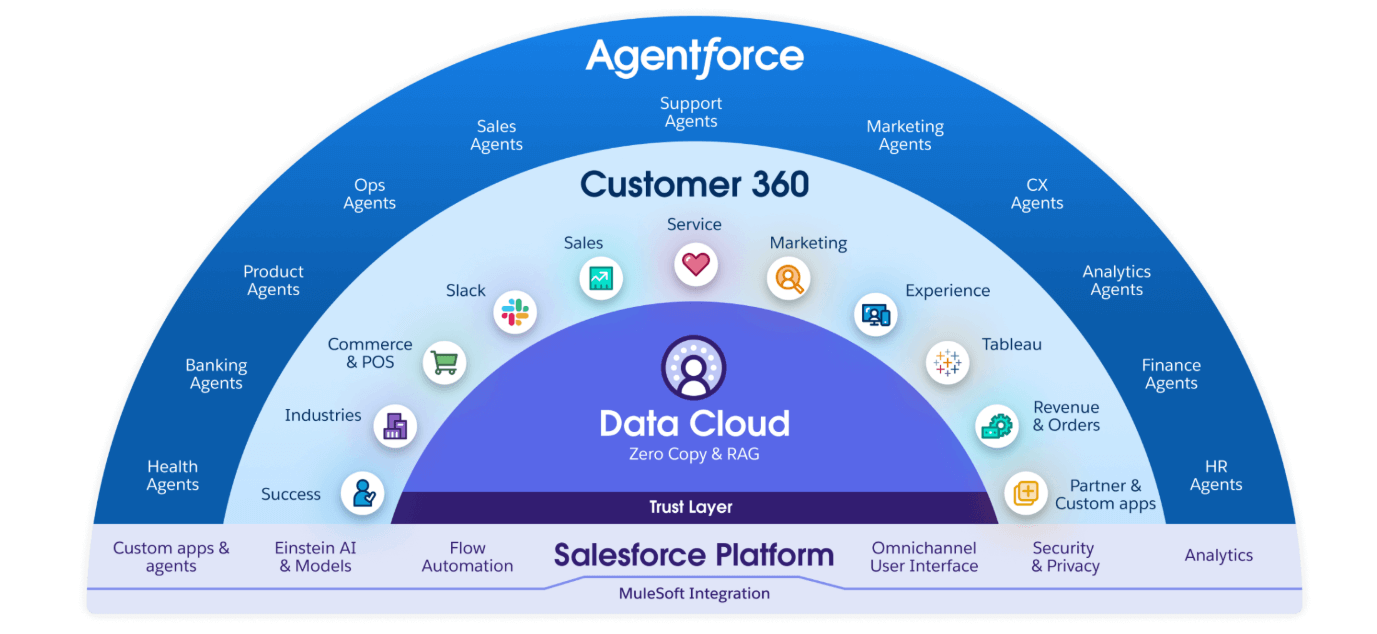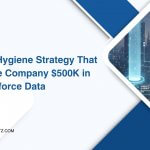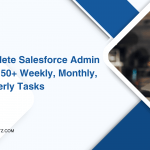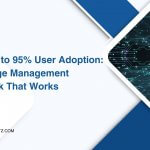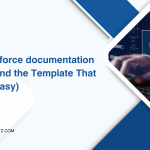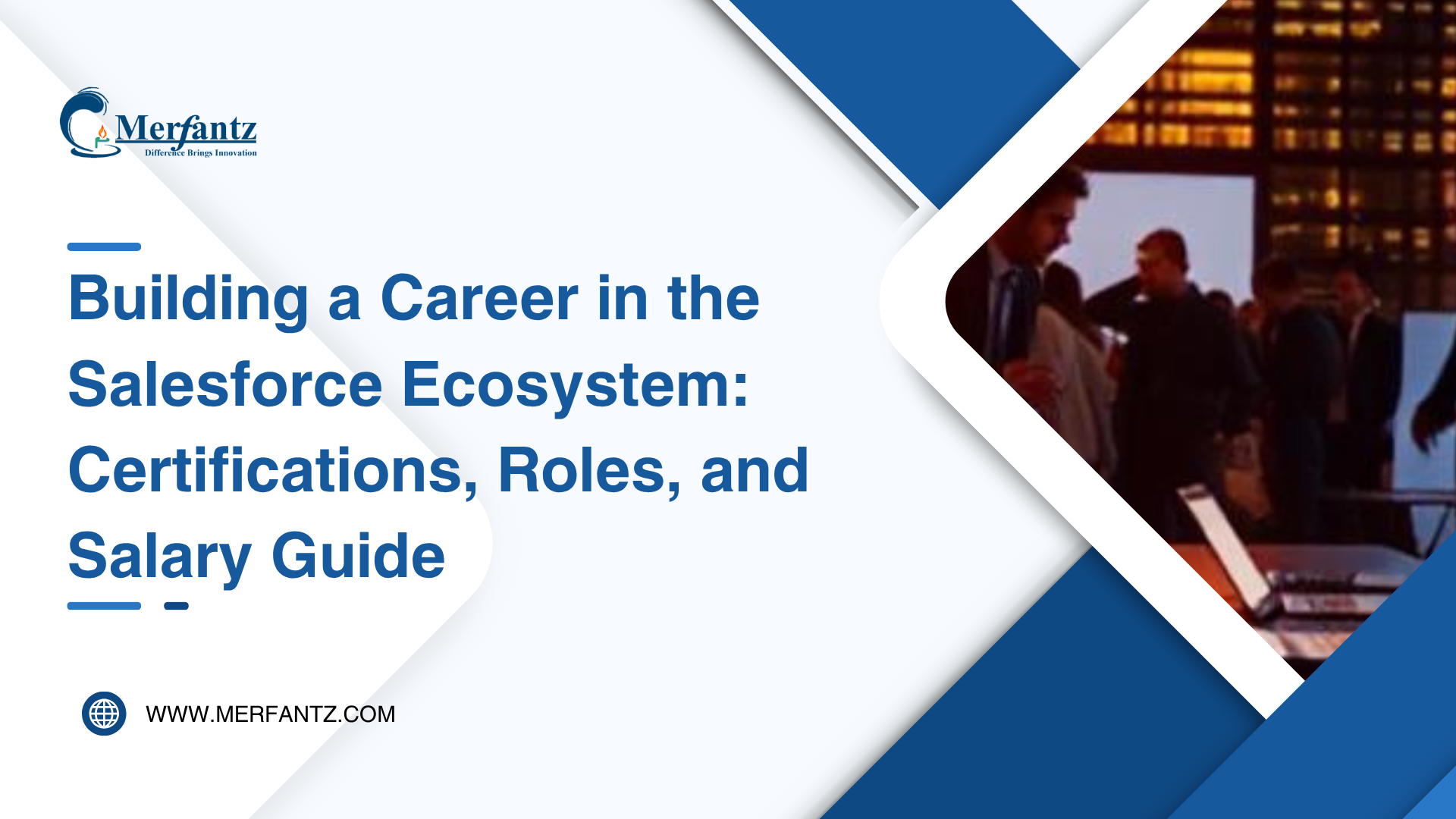
I start with a striking fact: about 15 million people now use or support the platform that began as Sales Cloud in 1999, creating one of the largest career markets in tech.
I wrote this guide to map clear career paths across admins, developers, architects, consultants, and ISV roles. I explain how major salesforce products and clouds fuel hiring in sales, marketing, and service for U.S. businesses.
You’ll get a practical view of role definitions, the certifications that matter, and transparent U.S. salary ranges so you can plan your next move with confidence. I also show why timing matters now as AI and Data Cloud reshape customer experiences and raise skill premiums.
Throughout, I blend hands-on advice, interview prep, portfolio tactics, and networking tips tied to real product updates and features. By the end, you’ll know which certifications to prioritize, which projects to pick, and how to present impact to hiring managers.
Key Takeaways
- Large market: Millions participate, making many career options available.
- Role clarity: Learn what admins, developers, and architects actually do.
- Cert focus: Prioritize certifications that employers ask for.
- AI impact: Agentforce and Data Cloud are reshaping skills and pay.
- Practical prep: I include interview and portfolio tactics you can use now.
- Product relevance: I tie advice to current product features and updates.
Why I Wrote This Ultimate Guide to the Salesforce Ecosystem
I wrote this guide because the career map around this platform is large but often unclear. I wanted a single, unbiased resource that shows the why and the how—not just the what.
The “Mothership” and the economy around it
The platform acts as a mothership: core products drive demand for partners, consultancies, and independent vendors on the AppExchange. That creates a durable market for skills and repeatable ways to build a tech career.
I connect business outcomes to platform capabilities so you can see how your work moves pipeline, boosts retention, and improves efficiency. I also lay out a clear sequence of certifications and projects to take action fast.
- I show how community events—Dreamforce, Trailblazer meetups, and Salesforce Saturdays—speed learning and expand relationships.
- I explain my approach to building a portfolio tied to measurable impact so hiring managers notice more than badges.
- I map practical steps and a timeline so you can turn study, hands-on practice, and community time into real opportunity.
Salesforce Ecosystem
A single platform creates a ripple: companies buy, partners build, and careers form.
The “mothership” and the economy around it
The platform anchors a market of roughly 15 million users and professionals. More than 2,000 consultancies were on the AppExchange by the end of 2022, making implementation work widely available.
Customers, consultancies, and ISVs: how value flows
Customers fund transformation. Consultancies deliver tailored projects. ISVs build niche products that scale into real companies — think Conga merging with Apttus in a high‑value deal.
Community, events, and relationships that power careers
Events like Dreamforce and Trailblazer groups turn introductions into referrals and jobs. Your reputation travels fast across organizations and partners.
- Scale: Millions of pros, thousands of partners — frequent openings across industries.
- Career paths: Work with customers, a consultancy, or an ISV — each offers different growth and lifestyle trade‑offs.
- Go‑to‑market skills: Sales and marketing motions align across customers and partners, so you learn product positioning and storytelling on the job.
How the Ecosystem Works: Customers, Partners, and AppExchange Companies
Understanding how buyers, consultancies, and AppExchange vendors interact explains where jobs and skills appear. I map the three player types and what they mean for your career choices.
Inside organizations: admins, developers, architects, and support
At a small company a single admin may own configuration, support, and releases. In larger organizations, teams include admins, developers, and an architect to translate business requirements into a scalable system.
Admins handle daily setup and user support. Developers build custom logic and integrations. Architects design for scale, CI/CD, and maintainability.
Consultancies and SIs: from boutiques to global firms
Consultancies range from niche boutiques to firms like IBM and Accenture. Smaller shops offer deep specialization and rapid ownership. Large SIs expose you to program governance, stakeholder alignment, and enterprise delivery methods.
Work at an SI teaches requirements gathering, delivery methodology, and cross-team communication—skills that speed promotion and broaden impact.
ISVs on AppExchange: niche products and careers
ISVs build targeted products to close platform gaps. Companies like Conga show how a focused product can scale and reshape a market.
- ISV roles include AE, SE, product, and support—many mirror classic SaaS careers.
- Integrations and data design often determine long‑term success and total cost of ownership.
- When evaluating a company, look at product portfolio, customer size, delivery style, and mentorship maturity.
Core Salesforce Products I Recommend Learning First
Start by learning the modules that directly map to revenue and support outcomes. I focus on three areas that give the fastest, measurable impact for a resume or portfolio.
Sales Cloud: leads, opportunities, forecasting, and revenue tools
Why start here: Sales Cloud is the backbone of pipeline and forecasting. It launched in 1999 and still leads the CRM market.
Learn lead-to-cash flows, basic forecasting, and add-ons like Revenue Intelligence and Sales Performance Management. Practice win-rate and cycle-time metrics in a demo org.
Service Cloud: omnichannel support, knowledge, and case management
Why next: Service drives retention. Study case routing across email, chat, phone, and WhatsApp.
Explore Digital Engagement and Service Cloud Voice to see how tools raise agent productivity and CSAT.
Platform: custom objects, Flow automation, and Lightning UI
Why master the platform: Data modeling, Lightning App Builder, and Flow scale across products and reduce code need.
- Practice the Transform element and Approval Orchestrations in Flow.
- Analyze requirements before configuration to avoid rework.
- Document before/after metrics to show business impact.
AI and Data in the Ecosystem: Agentforce and Data Cloud
AI and real‑time data are changing how teams automate work and serve customers. I’ll explain how autonomous agents and a unified data layer work together, and what to build first when you want measurable results.
Agentforce: autonomous agents, Prompt and Agent Builders, trust
Agentforce consolidates generative AI capabilities into Agent Builder and Prompt Builder so teams can create autonomous agents that complete multi‑step tasks. I recommend prototyping guided selling, case triage, or knowledge summarization to show clear KPI gains like time saved or faster resolution.
Atlas reasoning powers agent decisions, while the Einstein Trust Layer masks PII and enforces guardrails. That trust layer is critical for governance and stakeholder buy‑in.
Data Cloud: unified profiles, segmentation, and real‑time activation
Data Cloud ingests event streams and system feeds to build golden profiles and activate segments in real time. When integrations feed accurate identity resolution and consent metadata, AI agents act on reliable data and reduce risky outputs.
- I advise designing core data models, identity resolution, and consent policies up front.
- Use the Foundations bundle to prototype Agentforce conversations and Data Cloud segments without heavy spend.
- Document risks—data quality, hallucinations, oversight—and include mitigation steps in any proposal.
Finally, build a small portfolio project that ties an agent to Data Cloud records and measurable outcomes. That hands‑on proof shows the emerging skill premium for agent configuration, data modeling, and integrations—and it helps justify further investment.
Marketing Cloud: B2C Engagement, Personalization, and Intelligence
I focus on how the marketing cloud drives lifecycle engagement and measurable business outcomes.
Journey Builder, Email Studio, and Mobile Studio
Journey Builder coordinates onboarding, nurture, and reactivation across channels. Use event triggers and decision splits to move customers through clear stages.
Email Studio manages templates, segmentation, and A/B testing. Mobile Studio extends the same data to SMS and push for timely moments.
Advertising and on-site Personalization
Advertising syncs audiences to major platforms so paid media matches owned channels. On-site Personalization adapts pages to browsing behavior and turns anonymous visits into known profiles.
Marketing Cloud Intelligence and Loyalty Management
Marketing Cloud Intelligence consolidates campaign data to measure ROI across channels. Loyalty Management ties points and tiers to journeys, rewarding behaviors that lift retention.
- Build a starter portfolio: a welcome journey with triggered emails, an ad audience sync, and a simple personalization rule.
- Pass qualified leads and intent signals back to CRM to help sales act faster.
- Observe compliance basics — consent, frequency caps, and data governance — to protect brand trust.
B2B Automation: Marketing Cloud Account Engagement (Pardot)
I explain how Account Engagement supports B2B funnels with scoring, grading, and nurture so sales receives truly ready leads.
Core features: B2B email marketing, landing pages, forms, lead scoring, and multi-touch journeys keep campaigns measurable and repeatable.
Build forms and landing pages tied to campaigns so businesses can track first-touch, multi-touch, and pipeline influence. Clean campaign mapping makes attribution credible for both marketing and sales teams.
Align lead lifecycle, MQL definitions, and routing rules to sales expectations to prevent handoff friction. Create playbooks for alerts when high-intent scores change to shorten time-to-first-touch.
- Foundational assets: re-engagement sequences, webinar journeys, and ABM programs that work across customers and industries.
- Integration hygiene: sync behaviors and campaign fields to CRM so sourced and influenced revenue reports are reliable.
- When to choose which product: use Account Engagement for B2B CRM alignment; consider Marketing Cloud Growth/Advanced when you need broader channels and Data Cloud orchestration.
I recommend a portfolio project: boost webinar conversions by segment, then report pipeline created per segment. That shows measurable impact and positions you to bridge marketing and sales operations in this ecosystem.
Commerce and Order Management: From Storefronts to Fulfillment
Modern commerce blends visible storefronts with invisible fulfillment engines. I look at how storefront architecture and order orchestration shape teams, timelines, and customer outcomes.
B2C vs. B2B architectures
B2C Commerce often uses a separate stack (SFRA, headless, PWA). Brands like Puma and Adidas choose this for fast, brand-driven storefronts and rich front-end experiences.
B2B Commerce is native to the core platform and favors catalog rules, contract pricing, and account hierarchies. That native model speeds integrations to CRM and shortens delivery times for business buyers.
Order Management and service connections
Order Management runs on the core platform and orchestrates fulfillment, returns, and shipping. When connected to service, it provides a single customer view and automates return authorizations and case creation.
- Common integrations: payment gateways, tax engines, and ERPs—these affect performance and maintainability.
- Customer expectations: delivery visibility and self‑service tracking drive design for notifications and order status pages.
- Channel rules: promotions, pricing, and inventory behave differently across B2B and B2C and must be modeled for omnichannel consistency.
I recommend a demo build: create a simple B2B catalog plus a Service integration that auto-creates return cases. That shows how order events trigger proactive service messages and raise CSAT.
Finally, evaluate solutions by time‑to‑value, extensibility, and total cost of ownership. Connect commerce telemetry back to marketing and sales to power replenishment and cross‑sell campaigns. Prepare merchandising playbooks and incident response plans before launch to protect the brand during peak traffic.
Integrations and Automation: MuleSoft, Flow, and Heroku
I treat integration design as a feature, not a bolt-on, because timely data drives business outcomes. A clear plan decides which platforms and tools own each responsibility and keeps systems reliable under load.
MuleSoft Anypoint Platform and connectors
MuleSoft provides an API-led approach with out-of-the-box connectors to ERPs, SaaS, and mainframes. Use reusable assets and governance to speed enterprise integrations and enforce policies.
Flow: approvals, orchestrations, and screen experiences
Flow now handles Transform elements, Approval Orchestrations, and guided screens. Invoke a Flow for user-driven tasks, validations, and notifications to reduce custom code and speed delivery.
Heroku apps that connect to CRM data
Heroku hosts customer-facing web apps that scale independently while securely reading and writing CRM records. Choose Heroku when you need bespoke UI or language/runtime flexibility.
- Reference pattern: CRM → ERP sync via MuleSoft; Flow performs CRM-side validation and notifications.
- Track integration health: latency, retries, and error rate; document SLAs for business owners.
- Practice API-first design, version control, and test automation; build a small integration portfolio piece to show impact.
Security, Compliance, and Resilience: Shield and Backup
Security and recovery shape whether customers trust your product and stay with your company. I view these controls as business enablers that reduce risk and protect brand value.
Platform encryption, event monitoring, and field audit trail
Platform Encryption uses AES‑256 and supports customer‑managed keys for data-at-rest protection. Enable it when regulations or contracts demand stronger protection.
Event Monitoring delivers user behavior dashboards so you can spot anomalies, tighten access, and train teams before issues escalate.
Field Audit Trail preserves up to ten years of field history, which helps investigations, compliance evidence, and data quality reviews.
Use Einstein Data Detect to classify sensitive fields and apply least-privilege controls across systems and teams.
Backup and recovery aligned to today’s data requirements
Own Recover provides daily and on-demand backups, selective restores, and Smart Alerts for rapid detection of destructive changes.
Backup is the resilience layer: point-in-time restore and object-level recovery mean faster service restoration and less lost work.
- Document runbooks for incident response and restore testing.
- Enforce change control and segregation of duties across environments.
- Present an executive-friendly security posture that links investment to reduced risk.
When you treat security as core to architecture, you protect customers, support continuity of service, and make compliance a strategic advantage in the broader ecosystem.
Analytics in the Ecosystem: Tableau, CRM Analytics, and the Bigger Picture
Choosing the right analytics tool is a practical decision, not a philosophical one. I separate enterprise BI from embedded CRM insights so teams get the right view at the right time. This matters across sales, marketing cloud, and service cloud workstreams.
Tableau for enterprise BI across systems
Tableau fits when you must blend finance, product telemetry, and marketing data into a single executive view. It runs off-platform, can be on‑prem, and suits complex joins and cross-system KPIs.
Use Tableau to consolidate KPIs and to build an executive revenue dashboard with drill-through to sales and customer health.
CRM Analytics for native, action-oriented insight
CRM Analytics lives in the core platform and ties directly to objects, security, and actions. It is best for frontline change: quota coaching, case triage, and rep workflows.
Data Cloud fuels both approaches by improving segmentation, attribution, and lifecycle measures—making dashboards more reliable and actionable.
- Governance: define metric logic, data quality checks, and access controls.
- Decision alignment: map dashboards to commits, capacity planning, and churn prevention.
- Adoption: teach subscriptions and alerts so stakeholders act on insights.
Finally, consider Tableau Next and Hyperforce for scale and AI‑informed analysis tied to Agentforce-era features. I recommend a portfolio piece: an executive dashboard that links strategy to operational tasks and proves analytics lift in sales predictability, service capacity, and marketing ROI.
Popular Roles Within Salesforce: What Each Professional Actually Does
I’ll start practical: if you want to pick a lane, start by knowing what each role actually does each day.
Administrator, Business Analyst, and Consultant
Admins run release notes, manage backlogs, and keep users productive. They own configuration, permissions, and everyday automation.
Business analysts run workshops, map processes, and translate needs into requirements that developers or admins can act on.
Consultants align stakeholders, design solutions, and manage change during projects across a company or client business.
Developer and Architect career tracks
Developers build Apex, Lightning Web Components, and integrations using APIs and SOQL. They maintain repos and automated tests.
Architects lead data, security, and scalability decisions. They create decision records and reference architectures for long‑term health.
ISV and SaaS roles: AE, Alliances, SE, and Support
ISV roles mirror product companies: account executives, solutions engineers, alliances, and support focus on GTM and product success.
- Opportunity: SIs give multi‑cloud exposure; ISVs offer product thinking and GTM skills.
- Company vs partner: customers give depth; partners give breadth.
- Career tip: shadow roles and build role‑specific portfolio artifacts to prove impact.
Salesforce Certifications: A Practical Roadmap I’d Use Today
Start with certs that drive day‑one impact. I recommend an order that builds readable skills and portfolio assets you can show in interviews.
Starting strong: Admin, Business Analyst, and Platform App Builder
I’d take Admin first to master user setup, security, and automation basics.
Next, study Business Analyst skills to run workshops and translate needs into requirements. Then earn Platform App Builder to deepen data modeling and advanced configuration.
Expanding into clouds: Sales, Service, and Marketing credentials
After foundations, pick Sales and Service cloud paths tied to the roles you target. These map to the most-hired products and day-to-day features.
If your goal is marketing operations, add a marketing cloud credential aligned to campaigns and personalization.
Advanced goals: Architect paths and specialized badges
Attempt architect tracks only after real project exposure. Scenario exams and review boards reward practical experience.
- Specialized badges: MuleSoft, Shield, and Data Cloud signal enterprise skills and pay premiums.
- Pair every cert with a documented build so you can answer popular salesforce interview scenario questions and give strong interview questions answers that show business impact.
- Order I follow: Admin → BA → Platform App Builder → Sales/Service → Marketing (as needed) → Architect/Specialty.
- Study tactics: hands‑on org practice, release notes habit, study groups, and exam‑day planning.
U.S. Salary Guide: How Roles, Clouds, and Skills Influence Pay
Compensation in this market varies widely, and understanding drivers makes negotiations easier. I’ll summarize typical ranges, what lifts offers, and how to present your value to hiring managers.
Entry-level through senior: typical ranges and variables
Entry-level admins and support roles often start in the low-to-mid five figures. Mid-level specialists and developers commonly land in the mid-to-high range of typical tech salaries, with architects and senior leads earning significantly more.
Key variables: metro area, company size, and total comp mix (bonus, equity, on-call pay).
Premium skills: Data Cloud, Agentforce, MuleSoft, and Security
I see consistent premiums for professionals who combine platform know-how with Data Cloud modeling, Agentforce configuration, and MuleSoft integration design. Security credentials like Shield and backup strategy add value, especially in finance and healthcare.
- Service cloud and sales experience plus platform skills often anchor stronger mid-level offers.
- Regulated industries pay up for compliance experience and proven risk reduction work.
- Startups may trade cash for equity; enterprises pay more for deep specialization and SLAs.
Document outcomes—pipeline lift, reduced mean time to resolution, automation hours saved—to justify higher pay. Evaluate benefits, PTO, remote policies, and on-call expectations as part of the package.
Finally, practice compensation conversations with mock interview questions answers and prepare to link your project wins to popular salesforce interview prompts hiring managers use. Consistent delivery and stakeholder trust often accelerate raises more than chasing unrelated badges.
Breaking In and Leveling Up: My Step-by-Step Approach
Build small, measurable projects that show impact, then let those outcomes carry your story. I recommend a clear 8–12 week plan: set up a dev org, pick a use case, and ship an end‑to‑end build with documentation and a Loom walkthrough.
Hands-on projects, org experience, and building a portfolio
Pick real requirements: lead routing, case deflection, or a simple marketing cloud journey. Map acceptance criteria, wire a data model, and record test cases.
Use GitHub and Notion to present artifacts: requirements, designs, tests, and measured results. Iterate complexity across projects—add data modeling, automation, or a light integration each time.
Interview preparation: popular salesforce interview questions and answers
I keep a bank of popular salesforce interview prompts and coach answers using STAR plus business-outcome framing. Practice mock interviews with peers to refine delivery and reduce surprises.
Networking the smart way: Trailblazer groups, Slack, LinkedIn, and events
Run informational interviews, attend Trailblazer meetups and Fridays at local study groups, and share value first—code snippets, playbooks, or templates. Ask for referrals after you’ve helped, not before.
- 8–12 week plan: dev org → build → doc → Loom demo.
- Present artifacts cleanly with GitHub and Notion.
- Use mock interviews and public updates to build momentum.
Navigating Industry Shifts: Layoffs, Bigger Picture Trends, and Opportunity
I read layoff headlines to learn where companies are refocusing, not to assume the market is shrinking. Cuts often tell bigger stories about efficiency drives, AI adoption, and go‑to‑market tightening.
What this means for you: demand shifts toward people who can activate data and AI in day‑to‑day work. Learn agent and data patterns, show ROI, and you stay relevant as product roadmaps change.
Acquisitions like MuleSoft, Tableau, and Slack show platform expansion and long‑term relevance. Lawsuits amidst cyber incidents also raise the value of governance, compliance, and security skills.
When customers say a vendor hit their budget, value proof speeds deals. Build demos that quantify cost reduction and revenue protection. That reframes disruption as a hiring signal, not an endpoint.
- Adapt quickly: diversify across sales, marketing, and data to bridge teams.
- Document impact: show hours saved, pipeline uplift, or reduced MTTR.
- Stay plugged in: follow roadmaps, release notes, and Trailhead Live to spot where hiring rebounds first.
Conclusion
Your next career step starts with a single, measurable project. Pick a use case this week, build a short demo, and capture the metrics that matter to a stakeholder.
I recommend tying work to business outcomes: show how sales, service, marketing, data, and security combine to help a customer or reduce cost. Frame the result in one slide and a two‑minute walkthrough.
Learn the core, earn targeted certs, join the community, and iterate release by release. Interviews favor clear outcomes—bring metrics, stories, and a Loom demo.
Thank you for reading. Lean into small wins, share progress with peers, and you’ll find your next role is only a few focused projects and conversations away.
FAQ
What is the best first certification to get when building a career in the Salesforce ecosystem?
How do I choose which product or cloud to learn first?
What roles exist and what do they actually do?
How important is hands-on experience versus certifications?
Which automation and integration tools should I learn?
What analytic tools should I be familiar with?
How does Data Cloud change the way organizations manage customer data?
What’s Agentforce and why should I care?
How do ISVs on AppExchange create career opportunities?
What skills command higher salaries in the U.S. market?
How do I prepare for popular interview questions in this space?
What’s the best way to network and find opportunities?
How should I approach learning security and compliance features?
How can I break into consulting or system integrator (SI) work?
What should I know about marketing clouds and B2B automation?
How do commerce and order management fit into the platform?
How do industry shifts like layoffs affect career planning?
Author Bio
Co-Founder & CMO at Merfantz Technologies Pvt Ltd | Marketing Manager for FieldAx Field Service Software | Salesforce All-Star Ranger and Community Contributor | Salesforce Content Creation for Knowledge Sharing

